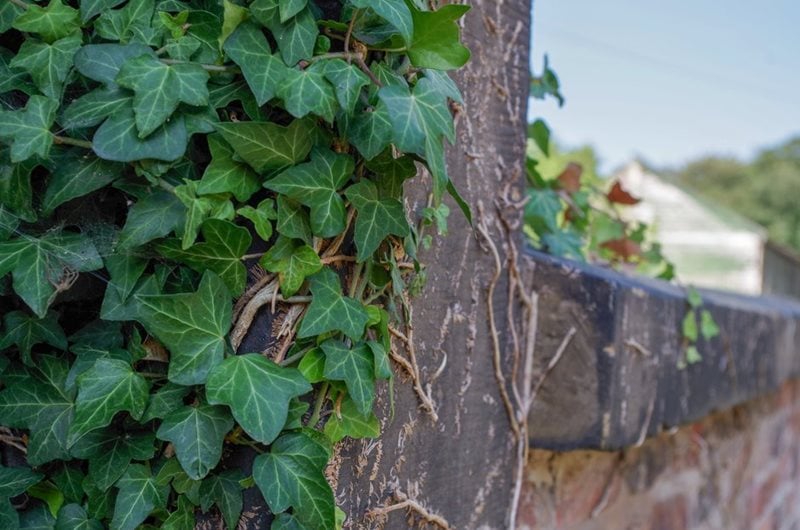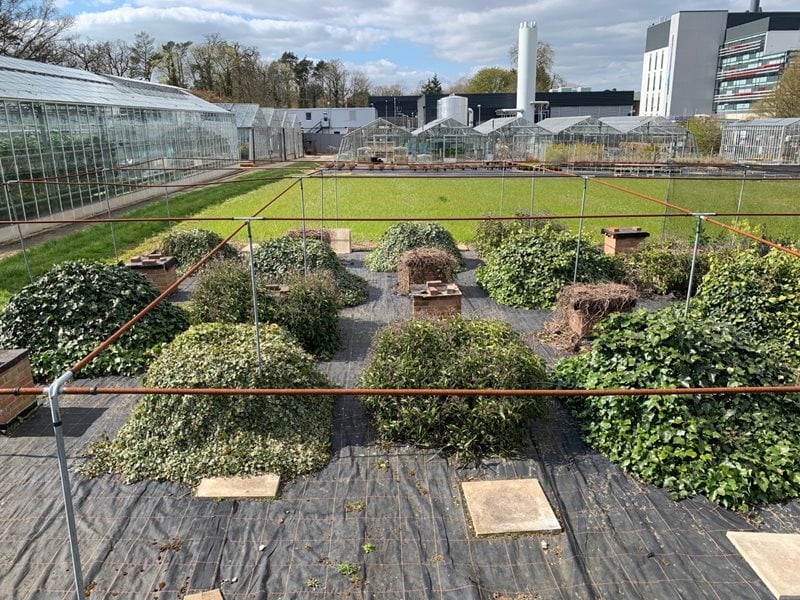Homes swathed in greenery look magnificent – and new research suggests it can also keep buildings cooler during hot summer months
 A study by the RHS and the University of Reading has found ivy is the most effective plant cover for cooling buildings and reducing humidity.
A study by the RHS and the University of Reading has found ivy is the most effective plant cover for cooling buildings and reducing humidity.
The paper, published in the Building and Environment journal, determines the impact of green facades and vegetative cover on the temperature and relative humidity within buildings.
As more people turn to vertical gardening through the use of green walls, this research has arrived at a perfect time for gardeners.
Damp concerns unfounded
Green walls in the form of climbing plants are low cost and take a minimal ground footprint so are ideal for those gardening in confined spaces.
There have been concerns that green walls may increase relative humidity and cause damp issues on the walls, but this research demonstrates this is not the case.
This paper looked at the impact of three plant species – common ivy (
Hedera helix), Boston ivy (
Parthenocissus tricuspidata) and climbing hydrangea (
Pileostegia viburnoides) – on temperature and humidity when grown as building cover. The experiment used model mini-buildings, pictured below, and the study was carried out in the summer and winter.

All plant species reduced the air temperature internally and externally during the summer daytimes by at least 1°C compared to ‘bare’ buildings.
The evidence showed that the best plant for summer cooling was provided by ivy. It was able to reduce the internal and external wall temperature by 7.2°C and 5.7°C respectively.
Cooler in summer, less damp in winter
Not only did ivy provide the best summer cooling for buildings, but it also demonstrated the greatest summer reduction in daily variation of relative humidity (RH).
During warm winter afternoons, relative humidity was 5.7% lower inside ivy-covered buildings compared to those without it. This means that ivy-covered walls would keep buildings less humid in winter months.
 Dr Tijana Blanusa, RHS Principal Horticultural Scientist, said: “Our research is an important step forward in growing our understanding of green walls. Many people with limited space are turning towards vertical gardening as a way of greening their homes or workplaces. We are encouraged by the findings that all the plants tested provide summer cooling benefits without causing humidity issues.”
Dr Tijana Blanusa, RHS Principal Horticultural Scientist, said: “Our research is an important step forward in growing our understanding of green walls. Many people with limited space are turning towards vertical gardening as a way of greening their homes or workplaces. We are encouraged by the findings that all the plants tested provide summer cooling benefits without causing humidity issues.”
“The RHS has been keen to encourage new ways of gardening and the development of technically simple vertical green walls using affordable climbing plants has proved to be a welcome addition. I hope that this research will help people decide which plants they want to grow.”
Dr Blanusa worked on this paper alongside Dr Faye Thomsit-Ireland, Dr Emmanuel A. Essah and Paul Hadley of the University of Reading.
You may also like:

